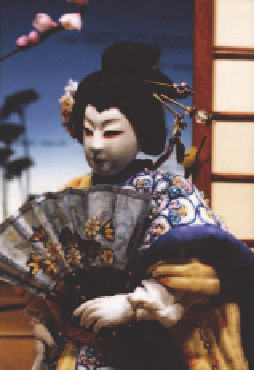Graphics Reference
In-Depth Information
13
Production
The lovers from
Screen Play
never had the close-up they deserved.
Trying to get a sense of the whole sequence is made dii cult by the practicalities of working.
Early in the morning you are fresh and it is common to see animators (and here I hold my hand
up) putting masses of activity into a shot, and then as the day wears on, it gets hotter under
the lights, you realise that the shot may not get i nished, and gradually the action becomes just
about the central character. When played back the shot is busy at the start and then peters out
towards the end. When several shots like this are next to each other, a clunky pattern becomes
very clear. Watch a scene in the pub from any bad soap opera and the characters all raise their
glasses at the same time. As the scene continues, the actors seem to have done their bit and
it quietens down. We must try to i nd the structure of the shot and the sequence itself, and
look at the bigger picture the whole time, which is not easy when you are so focused on a
particular frame. Along with the boards and the bar sheets, the role of the director is to make
the animator see this bigger picture.
Designing puppets to act
The i rst satisfying puppet I performed was Mr Toad from Cosgrove Hall's
The Wind in the
Willows
(the earlier
Pied Piper
was a beautiful, simpler puppet, but I only spent six months with


Search WWH ::

Custom Search